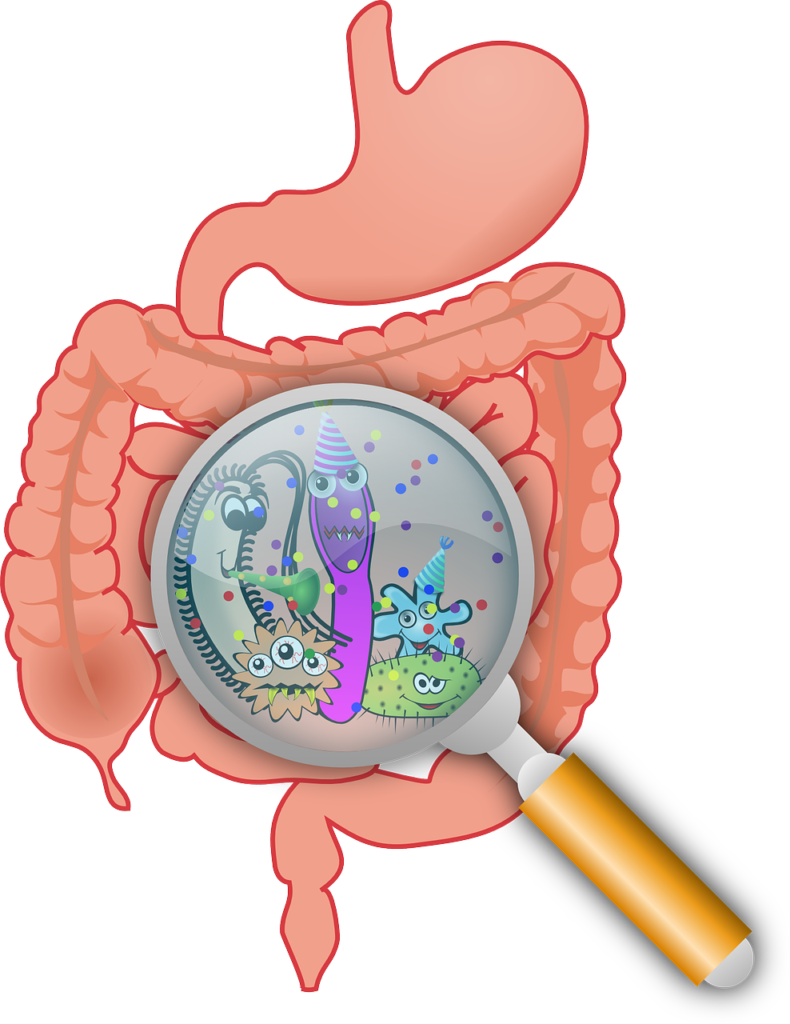Gut basics: the microbiome, prebiotics & probiotics

As a nutritionist, I am always interested in how someone’s gut is functioning, and this forms a key part of my investigative questioning in a consultation as gut health is such an important factor in our overall health…
Our microbiome, or the family of bacteria and other microbes that live in our guts, exerts influence over a whole range of day to day functions such as; assisting with immune defence, synthesising certain nutrients and of course helping us to digest our food and absorb nutrients from it.
It is an exciting time for research into this area regarding specific strains of bacteria and their benefits for different factors of our health, and also regarding a topic that I especially love and will be writing more specifically on in the future, from a ‘food and mood’ perspective – looking at the gut-brain axis.
For today though, I just wanted to get back to basics a little and chat a bit about these pre and probiotics that we hear so much about…
Our digestive system is a fascinating world, home to more than 500 different species of bacteria. These bacteria are often classed as ‘good’ or ‘bad’ and, essentially, the ‘good’ guys, known as probiotics, are what keep things in check in our gastrointestinal ecosystem.
We can replenish these probiotics via our diet, or supplementation (if required), however they also require nourishment and feeding to help them do their job.
This is where prebiotics come in – these are the foods which the probiotics feed and thrive on. Prebiotics are non-digestible carbohydrates which are able to avoid digestion in the small intestine and make it to the lower part of our gut where they nourish the ‘good’ guys.
Delving deeper, there is also resistant starch to consider; resistant starch also provides nourishment for our ‘good’ bacteria and is found in foods like cooked and cooled potato and pasta along with legumes, grains, cereals and firm bananas.
It is also able to avoid digestion in the small intestine, and make it to the lower part of our gut where it nourishes and is fermented by our microbiota. This fermentation also produces short chain fatty acids which help to keep the bowel healthy.
Some examples of probiotic and prebiotic foods are below – including a variety of these in your everyday diet is a great way to encourage diversity in your gut and to nourish the ‘good guys’!
| Probiotic foods | Prebiotic foods |
| Yoghurt (plain, with active cultures & no added sugar) | Resistant starch foods as mentioned above |
| Sauerkraut | Leeks |
| Tempeh | Asparagus |
| Miso | Eggplant |
| Kombucha | Onions |
| Kefir | Garlic |
| Kimchi | Peas |
| Cottage cheese (cultured) | Radicchio |
| Sour cream (cultured) | |
| Fermented vegetables | |
| Fermented meats |
Notes:
* It can be a good idea for some people to introduce fermented foods like sauerkraut and kombucha gradually ie; 1 tsp or ¼ cup at a time respectively and then build up from there if any bloating or excessive gas is experienced as this can occur when introducing high levels of new bacteria’s, depending on what your gut’s environment is like
* When buying probiotic foods, go for those that are kept in the fridge, not on the shelf – these will have live, beneficial bacteria
* Supplementation of wide spectrum or specific strains of probiotic bacteria can be beneficial for certain people/scenarios alongside dietary choices
* Always chat with a qualified practitioner when making dietary changes for specific reasons and to find out more about dietary and supplementation recommendations which would suit your individual circumstance
* Don’t stress about including these foods everyday if it is a new concept for you – habits take time to form – go easy with yourself & start slowly – a serve here and there is fine
Image via Pixabay

